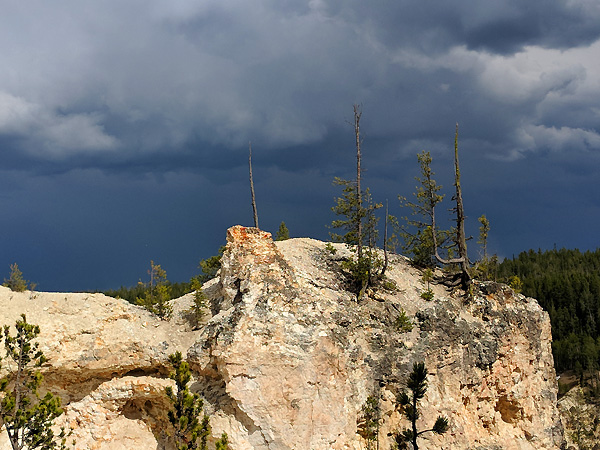 Yellowstone, Kruger, Ngorongoro Crater, the Mara – four of the most precious ecosystems on earth – are becoming as crowded as Disneyland. Is this right? Is it necessary?
Yellowstone, Kruger, Ngorongoro Crater, the Mara – four of the most precious ecosystems on earth – are becoming as crowded as Disneyland. Is this right? Is it necessary?
I never intended to visit an American national park in the high season, but I completely forgot about the Memorial Day weekend. It was an eye-opener. Yellowstone is a beautiful, healthy, diverse wilderness. We saw good game and the explosion of spring wild flowers is astounding. But there were so many people I had a very difficult time.
We probably saw a quarter of the nearly 6,000 bison and babies. On the very first drive in the Lamar Valley we watched a grizzly harass bison. The two coyotes we saw hardly pricked our attention given where we live, but even that’s a recent success story.
Across the road from where we were parked birdwatching, a wolf ran by carrying a bison baby head. There were dozens of gorgeous rare wild flowers, towering stands of healthy pines and lush stands of many prairie grasses following exceptional rains … and thousands and thousands of tourists and lines and lines of vehicles.
The scenery is fabulous. The geological history is magna-manimous, totally fascinating. Now with the successful reintroduction of wolves and the relatively recent hands-off return to natural balance that eschews both theories of invasive species and carrying capacity, current Yellowstone scientists and administrators are my wilderness heroes.
But it was only when Kathleen and I got far off the beaten track – which I must tell you for two 70-year olds is a challenge – did I feel a sense of wilderness wonderment as I feel so often in Africa.
We had to hike a minimum of 5 miles to get far enough away from enough people that we had intervals where we were alone, and even then those precious intervals didn’t last for more than a half hour or so.
Being alone is something I consider essential for communing with the wild. And I don’t mean necessarily solo: you don’t have to be a meditating hermit. You can have your whole book club or extended family together if you create a journey into part of the world that is undisturbed. That’s wild.
That isn’t necessarily a rich biomass or well protected ecosystem, either, although that helps. Yellowstone, Kruger, the Mara and the Crater are precisely that: precious, marvelously diverse ecosystems. We must continue all our efforts to preserve every shred of this biodiversity, and if it means – as apparently it does – that a high visitor use is essential, then we have to do it.
Because preserving biodiversity is our ultimate insurance policy for survival.
But what a terrible shame, an ironic shame that doing so comes at the expense of what naturally produces that biodiversity in the first place – the untouched wild.
The untouched wild is what inspires me, and I think probably can inspire most anyone. The wild is infused with frissons of excitement albeit fear that cut us down to size, reducing the intellectual self to blood and gut. It makes us keenly aware how vulnerable we are as an organic creature to all the vicissitudes of biology.
Like our evolutionary history or future imprisoned by climate change.
This is how you recognize the human spirit: that ‘thing’ which makes us different from a tree while still sharing everything else the tree has.
I could kick myself in the teeth for having made my first trip to Yellowstone on a holiday! Come when it’s a valuable experience, which in Yellowstone’s case means when the roads are clear of snow but when there are fewer people: At the margin of the seasons.
It’s the same principle I apply to my visits to Africa’s multitude of different places.
Unfortunately, based on my conversations with rangers and hotel clerks, it may be too crowded for me at any time Yellowstone is open. Creative road maintenance and trail blazing has begun to increase winter tourism and assure longer opening dates.
These super influxes of visitors made possible by modern management has already begun to happen to Kruger and the Mara. It hasn’t yet happened to The Crater, but I see it coming.
What was outstanding over the last two weeks were the vast lands outside the national parks, west of the Black Hills north into Montana. Massive areas of gorgeous wilderness, many national forests replete with pronghorn and bighorn sheep and bison but with few people other than the ranchers or native Americans who lived here.
The single most wonderful part of our excursion was hiking in the Bighorn Mountains among the pronghorn, mule deer and feral horses on a carpet of spring wildflowers: Having the focus to notice a tiny chipmunk watching us, a golden eagle diving in the valley, hearing the jumble of migrating warblers. For two days we were basically alone in this most magnificent wilderness.
The wild and biodiversity are marvelously connected in a multitude of ways, many interdependently. But they aren’t the same. And it’s terrifying to me that they may in our modern world be becoming mutually exclusive.
We can’t allow them to untangle from each other. It’s the only way we can know who we are with continuing to be what we are.